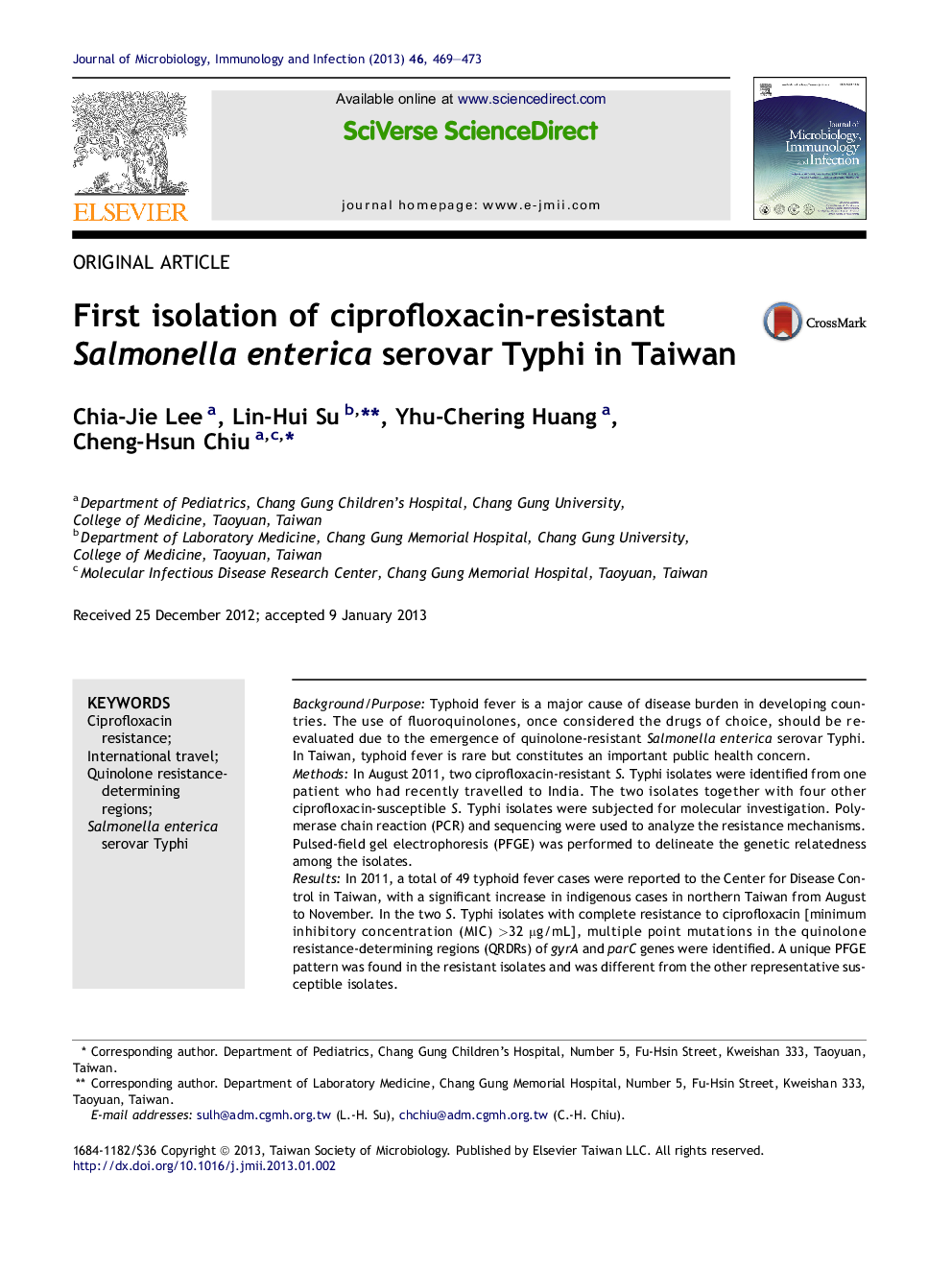| Article ID | Journal | Published Year | Pages | File Type |
|---|---|---|---|---|
| 3378112 | Journal of Microbiology, Immunology and Infection | 2013 | 5 Pages |
Background/PurposeTyphoid fever is a major cause of disease burden in developing countries. The use of fluoroquinolones, once considered the drugs of choice, should be re-evaluated due to the emergence of quinolone-resistant Salmonella enterica serovar Typhi. In Taiwan, typhoid fever is rare but constitutes an important public health concern.MethodsIn August 2011, two ciprofloxacin-resistant S. Typhi isolates were identified from one patient who had recently travelled to India. The two isolates together with four other ciprofloxacin-susceptible S. Typhi isolates were subjected for molecular investigation. Polymerase chain reaction (PCR) and sequencing were used to analyze the resistance mechanisms. Pulsed-field gel electrophoresis (PFGE) was performed to delineate the genetic relatedness among the isolates.ResultsIn 2011, a total of 49 typhoid fever cases were reported to the Center for Disease Control in Taiwan, with a significant increase in indigenous cases in northern Taiwan from August to November. In the two S. Typhi isolates with complete resistance to ciprofloxacin [minimum inhibitory concentration (MIC) >32 μg/mL], multiple point mutations in the quinolone resistance-determining regions (QRDRs) of gyrA and parC genes were identified. A unique PFGE pattern was found in the resistant isolates and was different from the other representative susceptible isolates.ConclusionsThe first ciprofloxacin-resistant S. Typhi infection in Taiwan is reported. The emergence and spread of antimicrobial-resistant S. Typhi infection as a result of international travel may become a threat to public health in Taiwan. Clinicians should be well alert when treating patients who may have acquired resistant infections associated with international travel among endemic regions.
